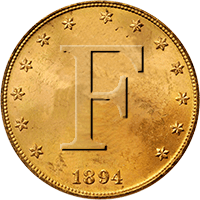Folks,
I have been using a Minelab Safari for the last 5 months and am considering an upgrade to either the Explorer SE Pro or the E-Trac. I am a relic hunter, living adjacent to Gettysburg and hunting mostly in PA and MD, with occasional trips to VA. I run into just about every soil condition, from soft loamy brown gold to rust-red "powdered Iron" (Culpeper, VA, Emmitsburg, MD, parts of G'Burg, etc.). Most of the places that I get permission to hunt are considered "hunted out", with just about every machine imaginable having passed through since the advent of the Metrotech and the surplus WWII mine sweepers, so targets are generally more than 8 inches deep or deeper.
The Safari has been excellent at finding the deeper targets, especially bullets (my area of specialization, my collection can be viewed at http://www.baymediapro.com/collection). Do you folks feeel that the extra computing power in the Explorer and E-Trac would make them better machines for my type of hunting? I am getting familiar with the Safari's orchestra of tones and am really starting to like that machine a bunch, but I generally dig with people that use the latest and greatest developments from Whites and Fisher and am always looking for that slight advantage.
Any and all opinions are welcome and appreciated,
Tom Henrique
I have been using a Minelab Safari for the last 5 months and am considering an upgrade to either the Explorer SE Pro or the E-Trac. I am a relic hunter, living adjacent to Gettysburg and hunting mostly in PA and MD, with occasional trips to VA. I run into just about every soil condition, from soft loamy brown gold to rust-red "powdered Iron" (Culpeper, VA, Emmitsburg, MD, parts of G'Burg, etc.). Most of the places that I get permission to hunt are considered "hunted out", with just about every machine imaginable having passed through since the advent of the Metrotech and the surplus WWII mine sweepers, so targets are generally more than 8 inches deep or deeper.
The Safari has been excellent at finding the deeper targets, especially bullets (my area of specialization, my collection can be viewed at http://www.baymediapro.com/collection). Do you folks feeel that the extra computing power in the Explorer and E-Trac would make them better machines for my type of hunting? I am getting familiar with the Safari's orchestra of tones and am really starting to like that machine a bunch, but I generally dig with people that use the latest and greatest developments from Whites and Fisher and am always looking for that slight advantage.
Any and all opinions are welcome and appreciated,
Tom Henrique

